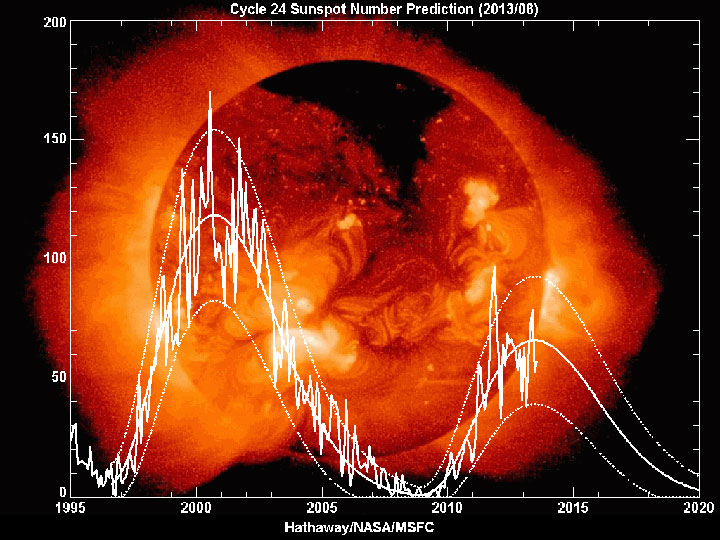TORONTO – Just as a sunspot unleashed three major solar flares this week, NASA scientists announced that they believe the sun is finally going through its maximum phase.

Why does it matter? This will likely affect us in some way.
READ MORE: How solar storms could leave us in the dark
Our sun goes through minimum and maximum periods roughly every 11 years. But that cycle isn’t exact, sometimes it could be nine years, or it could be 14. The 11-year cycle is an average.
When the sun goes through its maximum, it’s more active, producing more sunspots and coronal mass ejections. Sunspots are linked with solar flares – entanglements in magnetic field lines – which send particles into space, reaching Earth within minutes. Coronal mass ejections, or CMEs, send out billions of tons of particles that can travel at billions of kilometres per hour.
And when these particles reach Earth and interact with our magnetic field, we see the results.
“The biggest thing is that it has the northern lights,” Dean Pesnell of NASA’s Goddard Space Flight Center told Global News. “Most of the other effects of space weather is into large systems, that an individual person may be inconvenienced but isn’t strongly affected.”

Pesnell, who is a leading member of the National Oceanic and Atmospheric Administration/NASA Solar Cycle Prediction Center that is comprised of solar physicists who forecast solar cycles also added that GPS is affected, and flights may not be allowed close to the poles.
“The Canadian power grid seems to be affected strongly by space weather at times,” he said referring to the 1989 blackout in Quebec that was a result of a solar storm. “But power companies have learned; they’re not dumb.”
“People really hate it when there’s outages, so over the last decade or so, they’ve actually started putting into place ways to keep space weather from causing big power outages.”
The flares that erupted from the sun this week were X-class flares, the strongest flare there is.
What we can expect
Right now we are in Solar Cycle 24, which began in 2009. And it’s been a ho-hum kind of cycle, with much less activity than is normal for a maximum.
Just because this solar cycle has been slow, it doesn’t mean that we will see less activity – like solar flares – from the sun. In fact, one of the strongest solar storms on record occurred in an average solar cycle, in 1859. The Carrington Event set telegraphs on fire and caused an incredible display of the northern lights.
“So a weak solar cycle does not imply that there won’t be any large storms,” Pesnell said.
Asked if he’s worried about a Carrington-like Event in this cycle, Pesnell said that it’s a possibility.
In fact, Earth narrowly missed an event stronger than the Carrington event in July 2012.
Pesnell said it will be interesting to see what the sun has in store over the next few years.
“The sun does it’s own thing, but it’s a lot of fun to predict.”


Comments